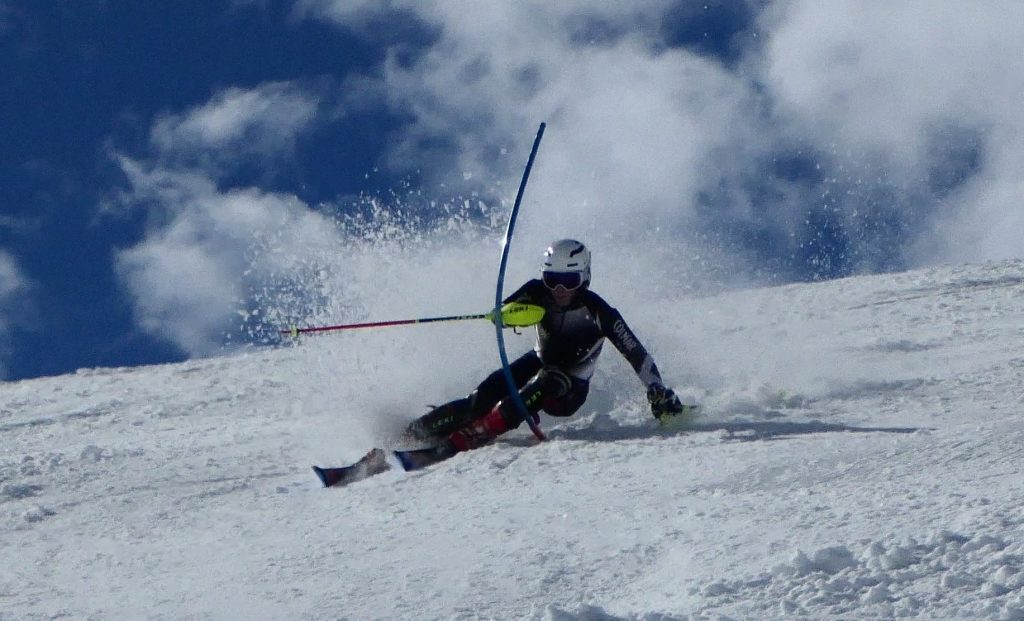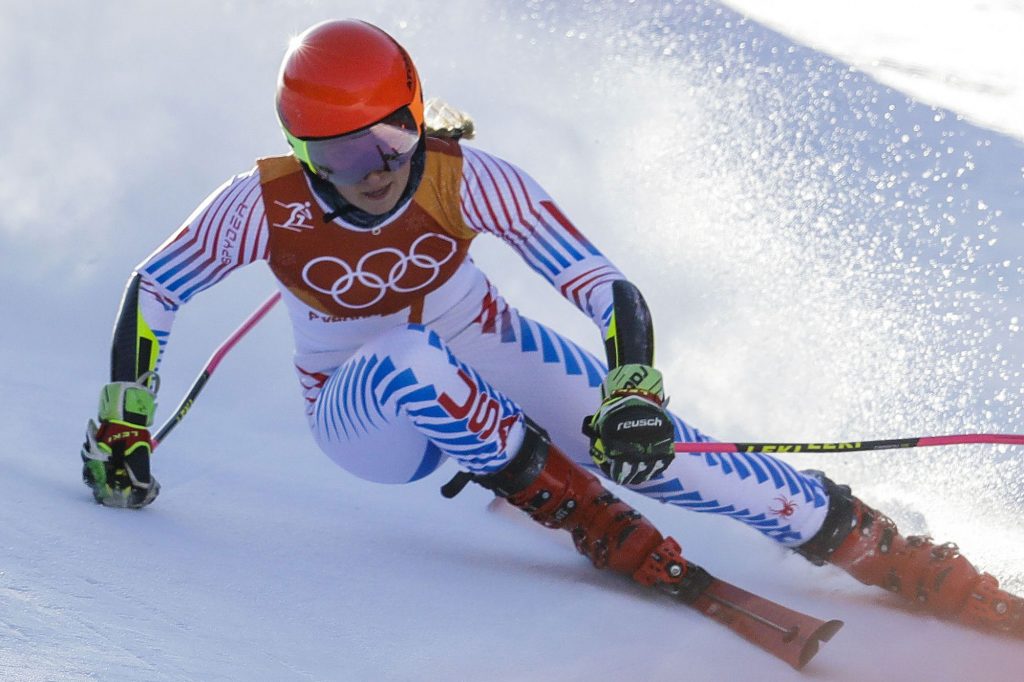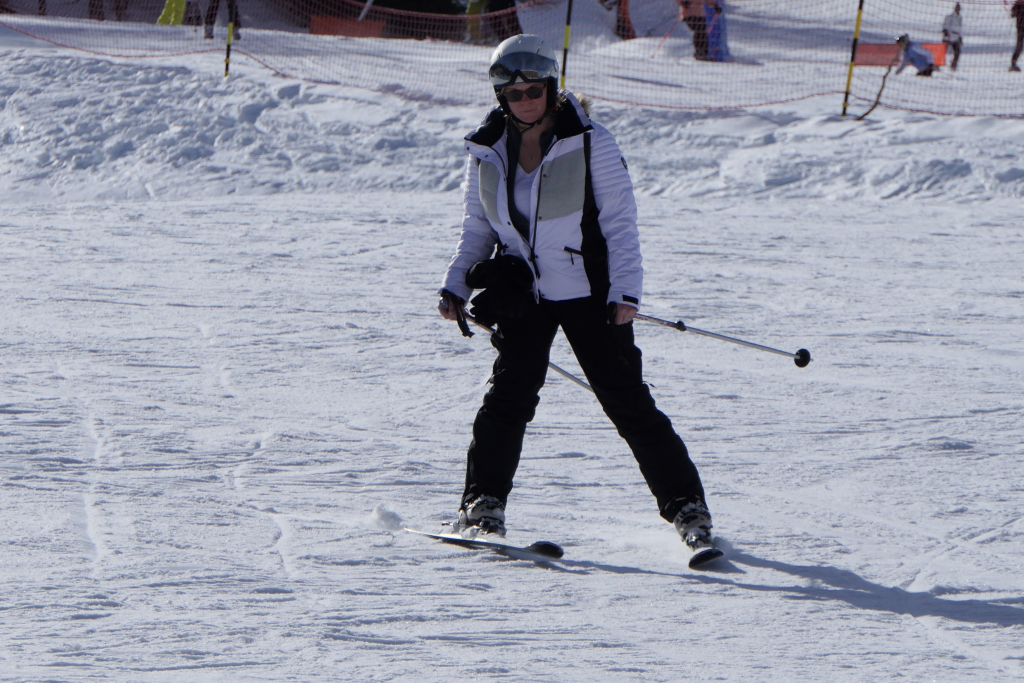Starting off today with a “recalibration” – a few runs on familiar nursery slopes. Emphasis was on extending the outside leg in the turn and maintaining the extension until the end of the turn. Here’s a photo below showing an advanced level of the same thing where it is clearly visible.

Jack this morning was back to riding his horse again. The pivot exercises help to train the necessary adductor muscle use – but we also worked on how to use the inside leg during a turn – with Jack succeeding to correct his stance in turns to the right – but remaining on his horse for turns to his left.
Here’s an extreme example of using the inside leg – held in front of the navel with the adductors. Just remember to pull the top of the inside leg toward the outside of the turn – while the top of the outside leg is pulled inward.

Sara successfully managing to stay off the backs of the ski boots and use the turning power of the fronts of the skis. There’s still a tendency to rotate the upper body into the turn when standing on the left leg (turning to the right)
Body rotation into the turn – get’s the body tied in a knot! Only happening in one direction because of not feeling safe standing firmly on the left leg. Just need to be aware of it to correct it. Pull the left hip back a little during the turn (We’ll look at this properly tomorrow!)

Scarlet – nice basic parallel turns by the end of the morning.
Foot Forward Technique (for coping on steep slopes)
To be safe on steeper slopes while still using a plough we introduced “Foot Forward Technique”… This gives security through the start of a turn on steep terrain.
Pushing the outside (uphill initially) foot forward during the turn. The foot never gets in front of the other foot – it just tightens the turn instead.
The exercise is practised with skis off and standing in ski boots. For this static exercise we use ski pole support with the body faced downhill with the uphill foot pointing across the hill and the downhill foot pointing downhill and the heel jammed into the snow. The uphill boot is pulled over onto its inside edge and pushed forwards in a natural arc – the leg rotating at the hip joint.
Here is some video of exactly the same action in ice hockey training. In skiing the direction of travel would be straight downhill instead of straight ahead on the flat ice.
Pivot (Skis sliding Sideways)
Pivoting is derived from the skis sliding sideways and can be developed from side slipping (It’s a braking form of turning). With a “pure pivot” as an exercise there is no forward travelling of the ski across the hill. Support for the centre of mass is now provided by support from a downhill pole plant. This is the real reason why we have ski poles! There is a full dedicated explanation of pivoting at the following link: “PIVOT“
Combining Dynamics and Pivot
- Dynamics depends of forward motion of the skis and lateral falling/pushing of the centre of mass
- Pivot depends on lateral motion of the skis – but always with the centre of mass being driven inward (toward the turn centre)
- The two can be combined – when there is both forward and lateral motion – making overall control of trajectory and speed totally under control of the skier
- In all cases there must be active adductor muscle use – and the feet must be “everted” ie. turned outward inside the ski boots – diverging sightly (skating stance)
- The essential element to take from combining pivot and dynamics is to execute the turn transition from the uphill edge of the uphill ski – noting that the ski enters the new turn more easily than when on its inside edge and this also prevents stemming (and body rotation)

